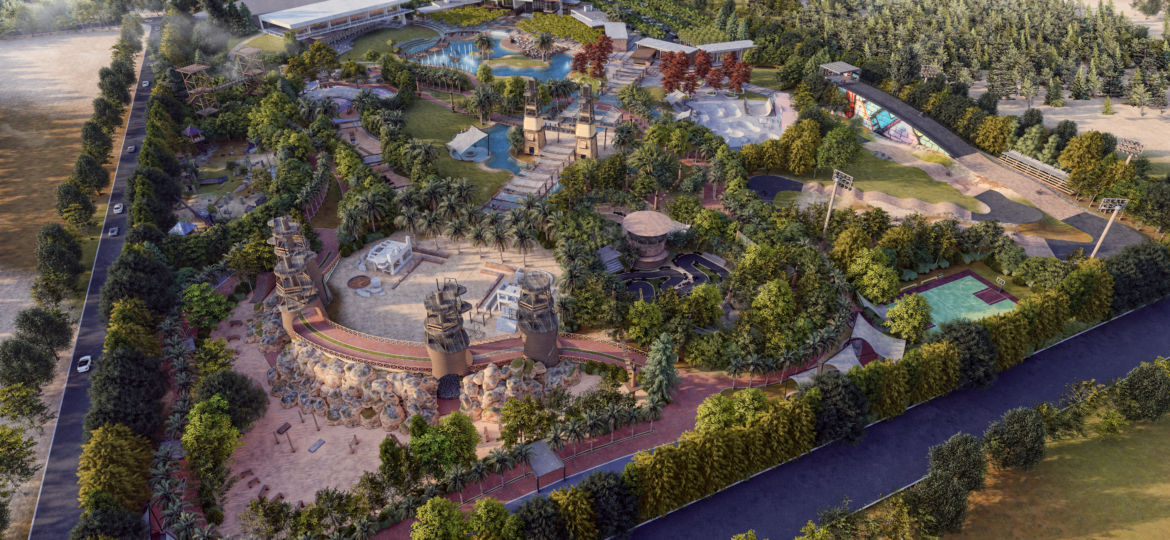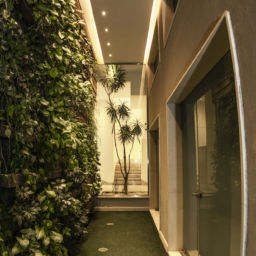
It’s widely accepted that our climate is changing nowadays and that these changes are at least in a part a result of human activity, According to The Intergovernmental panel on climate change (IPCC):
- Carbon dioxide (CO2) levels have been at their highest for 650,000 years
- Climate change is unequivocally happening
- There is a 90% chance that this is a result of human activity
- We have an average of 3 to 5 years left to put in place serious measures to start reducing emissions.
Everyday the danger of climate changes increases and affects the world, taking actions towards this problem is a must in order to save the world from being destroyed. However, the predictions for climate change are dire, they are not inevitable. Just as serious consequences are projected, the impact will be significantly lessened if we take steps now to reduce the Carbon pollution. We can also take actions both natural and human communities adapt to the changes that are already underway.
Do Landscape architects have a solution?
When it comes to climate change regulation, Landscape architects have a wide range of strategies at their disposal. Mitigate, which refers to anything that slows down global warming by reducing the concentration of greenhouse gases within the atmosphere. It is something that can take many forms at every social scale, from individual actions to national legislation that provides funds for public transportation systems.
The primary way in which landscape architects can deal with climate change is by continuing to do what they’re perhaps known best for: planting plants. A photosynthetic organism stores one pound of carbon in its leaves, stems, and trunks, which means that one pound less of that carbon is taking up space in the atmosphere. This truth is obvious, which helps to explain why activities like tree-planting campaigns are so well-liked by the general public. However, the characteristics of plants selected for particular surroundings, the way they are arranged, and how they are maintained are vital elements in determining the actual carbon sequestration potential of different landscapes.
In order to effectively handle the effects of climate change, landscape architects must select appropriate plant catalogues, plant them carefully, and take into account the site’s existing characteristics.
How could we mitigate climate change?
It is incorrect to assert that climate change is inevitable because it has already occurred. The volume of greenhouse gases released over the course of the last century has already locked in some level of global warming. Consequences like sea level rise, droughts, and heat waves will therefore get worse over the next few decades.
The following are some methods that landscape architects can assist communities in adjusting to these changes:
WATER EFFINITY:
Increases in temperature have been demonstrated to have an impact on the hydrologic cycle. The amount of precipitation, its timing, and its intensity all decrease as evaporation rates rise. As a result, there is a chance that our droughts could last longer and the groundwater recharge process would go more slowly. We appreciate design strategies that address the demand for greater water efficiency. We can prevent rainwater and storm water from running off the ground by using design components like rain gardens, built wetlands, permeable pavers, rooftop gardens, and many others. In many of our initiatives, we have promoted the use of these components.
REDUCE HEAT-ISLAND EFFECTS:
Hardscape, softscape, open space can all help to reduce a building’s heat-island effect. This moderates the temperature of the project site and lowers the amount of energy required to operate a building. Urban heat island effects are defined as a five-to-nine-degree Fahrenheit (f) increase in temperature between an urban Centre and its surrounding rural area. The high demand for artificial cooling during the hottest parts of the summer causes additional greenhouse gases to be released as a result of this unnatural temperature rise, which furthers the problem of global warming. The enormous heat that metropolitan structures emit as a result of how they absorb, reradiate, and create extra heat is a significant factor human-made heat sources (i.e., vehicles, power plants, air conditioners, etc.). As landscape architects, we may use vegetative roof + wall systems, urban trees, open green space, lighter colored paving material, and photovoltaic shade canopies into our designs to assist minimize this issue. Consider urban woodlands as one example. Urban trees can reduce the temperature by covering air-conditioning units, shelter structures, and outdoor areas with shade.
Conclusion:
It is simple to believe that the best ways to regulate and adapt in a world threatened by climate change are new technologies, flashy infrastructure, and bigger seawalls. However, landscape architects continue to demonstrate that this is frequently untrue. Returning to the most fundamental existent system — the land — in search of solutions to our contemporary problems offers a method that frees us from dependence on the byproducts of industry and extraction. It is one that promises to transform our towns into sustainable areas of prosperity and enchantment, along with the shrubs, trees, grasses, flowers, and ferns planted inside them. It also promises to address the current issue.
We have to know and believe that landscapes are one of the most effective solutions to regulate climate change and many other problems we are facing. Thus, integrating landscapes in our community now days is a must.
SCHADUF’S COMMUNITY VISION:
In SCHADUF we try our best to help the community to evolve by applying all the possible solutions while designing your landscape by creating responsible designs of all types, scales and at all stages of planning. We look towards the uniqueness of natural, cultural, and historical surroundings to provide inspiration, while continuously evolving to integrate new understandings. Working in tandem with nature to achieve appealing results, we design outdoor spaces that are timeless and establish relationships that strengthen these concepts for future projects and generations. Driven by their belief in holistic development, land preservation, and aesthetics, our architects challenge themselves to continuously improve the interaction and harmony between people and place. We offer our clients fully-coordinated, comprehensive project services that include feasibility, planning, and all design stages through to tendering and construction site supervision. We have the advantage of being part of a multi-disciplinary organization allowing us instant, direct access to complementary expertise including cost consultants, agronomists, lighting specialists and environmental consultants. This allows us to provide the very best of services to our clients for all their needs.














